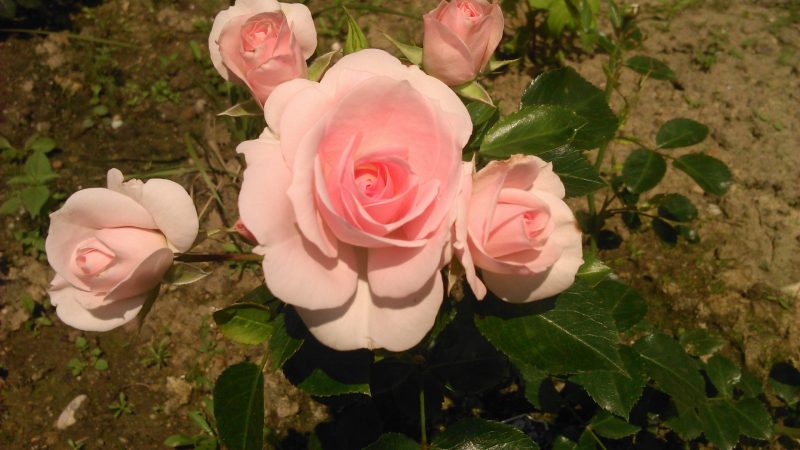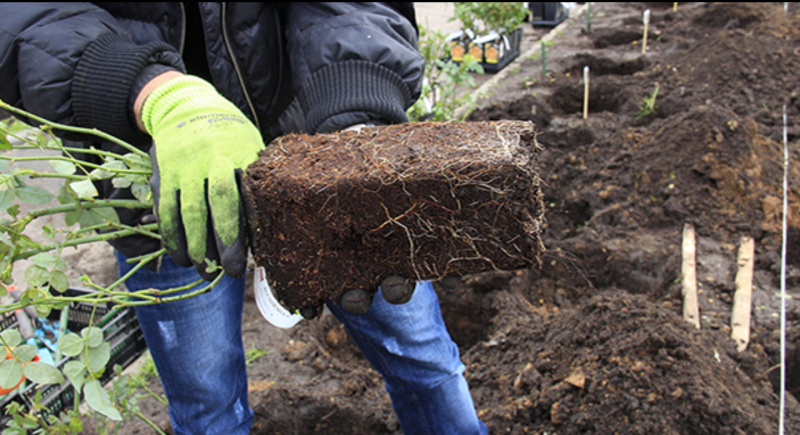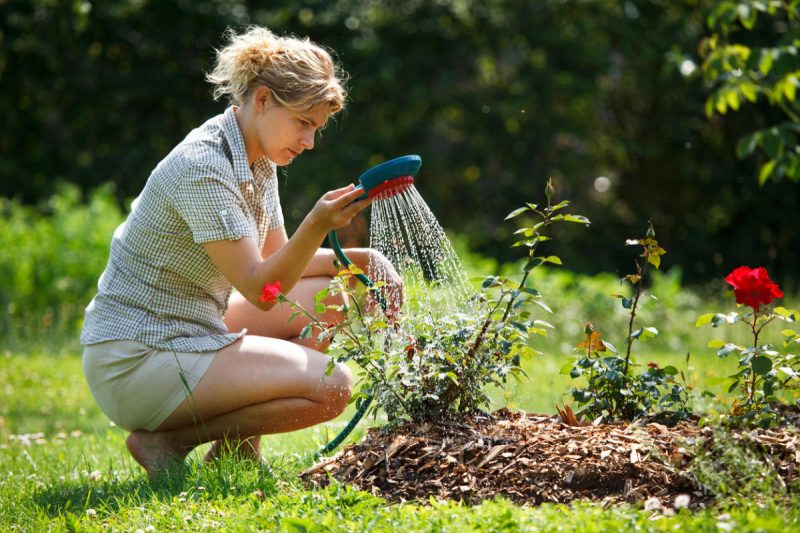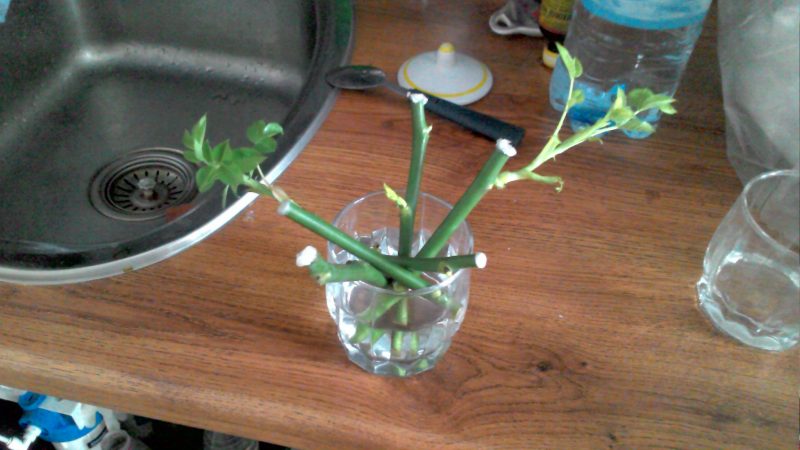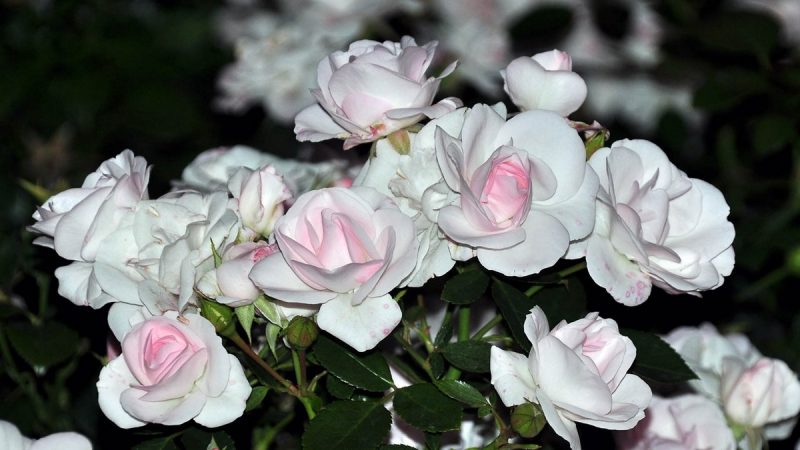There are plenty of faithful admirers of the rose Aspirin. Undemanding beauty, delighting all summer until late autumn with delicate white flowers of its owners, is admirable.
Material Content:
Description of the variety of roses "Aspirin"
It is difficult to find a rival to this variety by the abundance of advantages:
- continuous flowering from June to the end of September and even in November;
- soft pink buds, opening, turn into snow-white semi-double flowers;
- the size of each flower, of course, is not comparable with the buds of tea-hybrid beauties: only up to 6 cm in diameter, but in each brush there can be up to 15;
- it pleases in any weather: even in prolonged rains it does not wilt, and in cloudy weather it glows with a pinkish tinge; in the heat its petals do not sinter; in the cold, flowers acquire a pink blush;
- “Aspirin Rose” is a neat flower: it drops its faded petals itself, preventing them from withering and acquiring an ugly color and appearance;
- transforming rose: it can be grown as a groundcover, allowing flowering branches to conquer the area around; you can raise the branches, creating a lush bush; if you fix the flexible stems on the support, then it will serve as an excellent vertical decoration.
For hopelessly sick with rosomania, the name of the company that created this variety - “Tantau” - says a lot: this is a guarantee of impeccable beauty, rapid growth, abundant flowering, resistance to disease, endurance.
The outstanding qualities of Aspirin Rose are acknowledged by the following awards:
- "ADR" (in 1995 and 1996) the German quality mark of the most hardy and beautifully flowering roses;
- The Gold Standard (2006) is awarded by the Association of English Rose Breeders to the most attractive and disease-resistant varieties.
According to the classification, “Aspirin” is classified as a rose floribundum for inflorescences of many flowers, called “bouquet”. But for the shape of the bush, it is reckoned both as ground cover, and semi-planar, and low scrubs - the bushes can reach a height of only 80 cm.
Small glossy dark green leaves are visible only at the beginning of flowering, then they are almost hidden behind the snow-white clouds of flowers.
Adherents of roses with rich aromas will be disappointed: Aspirinka exudes a subtle weightless aroma that does not suppress the fragrance of other flowers.
Outdoor landing
The planting time for the Aspirin Rose rose depends on the climate: in areas with warm winters, it can be planted in autumn, in central and northern regions in spring.
During spring planting, pruning of shoots is necessary, in which leave on the branches: for weak bushes - no more than 2, for strong bushes - no more than 3 buds. Autumn planting involves only shortening the branches by 10-15 cm and the final pruning in the spring.
Before planting, it is advisable to withstand the roots of roses for a long time in a container of water - for quick and painless rooting.
A rose reveals all the nuances of beauty in sunny areas, but can also grow in light partial shade, then the flowers will not be snow-white, but with a pearly pink hue.
The place chosen for the rose must be carefully weeded: although the sprawling branches prevent the spillage of weeds, even a small presence is undesirable.
In an excavated pit measuring 50x50 cm in layers, a thickness of 10 cm is poured:
- drainage, gravel or gravel can be used for it (to prevent stagnation of water);
- various mineral fertilizers;
- garden ground.
After this, it is advisable to shed the soil. When the earth absorbs water, pour a small hill of garden soil on which to evenly distribute the roots of the seedling.
Carefully fill the roots with earth, making sure that the root neck of the rose is 3 cm below ground level - this ensures the rapid formation of new stems.
After planting, you need to water the bush again - so that there are no voids between the roots. When the soil settles, add soil, level the soil.
Care of flowers on a site
"Aspirin Rose" - a variety that is unpretentious, not giving gardeners much trouble. Of course, subject to the right location and compliance with the landing conditions.
Watering
Opinions are divided on this issue. Some believe that watering should be more often with prolonged drought. Others take the opposite position: the plants themselves regulate their forces and better than people foresee the changes in the weather and adapt to them. And frequent watering weakens the immunity of plants and contributes to diseases.
It is preferable to water in the evening when the heat subsides.
It is interesting:spirea: planting and care
Top dressing
In one opinion, the florist agrees: it is necessary to feed the rose regularly at least four times per season:
- in the spring during the appearance of leaves - it is better to use complex spring fertilizer;
- during budding and during flowering - with mineral fertilizer, but it is better to cook it yourself. “Green” top dressing from weeds - a storehouse of trace elements, especially nettles, plantain, burdock, dandelion, clover;
- in the fall after flowering - a ready-made comprehensive autumn fertilizer.
Top dressing is especially effective if applied when it begins to rain, and during summer rainfall.
Removing Faded Inflorescences
As stated above, Aspirin Rose itself drops fading petals. When the whole inflorescence has flowered, the branch is shortened with secateurs to a new, as a rule, already formed peduncle, which will more quickly grow and bloom.
Pruning
Do I need to cut roses in the fall - there is no consensus. In any case, it is necessary to remove the affected, dry branches and shoots. If desired, you can trim the stems by 10-15 cm.
The choice of spring pruning method depends on the condition of the bush:
- a short one (leaving up to 3 buds on each branch) is made for weakened plants and old-timers;
- moderate (leaving up to 6 buds) are used, wanting to achieve early flowering.
Shelter for the winter
Although the variety is recognized as frost and winter tolerant, in areas with low winter temperatures sheltering bushes to prevent freezing is necessary.
Preparing for the winter involves several stages:
- high sprinkling of the root zone with earth;
- removal of leaves and fruits remaining on the branches;
- covering branches with spruce branches or dry leaves;
- the construction of frames that are covered with lutrasil or agrotex.
The main thing is that everything necessary for sheltering roses (earth, lapnik, leaves) must be dry, prepared in advance. They shelter when frosty weather (up to 7-10 degrees) is observed for at least a week, in the middle lane most often it is the end of October - mid-November.
Ways of breeding roses
The variety is beautifully cut, preserving all the qualities already as a root-owning rose.
In June, when the formation of buds begins, approximately in the middle, the annual shoot is obliquely cut half a centimeter under the bud. The upper part of the branch is cut at a right angle in a centimeter from the eye, hoping that the length of the stalk will be 8-10 cm and there will be at least three buds on it. The lower leaves, which can get into the soil during planting, are removed, the upper ones are shortened. It is advisable to place the cuttings before planting in a solution of "Kornevin" or other means of promoting root growth.
It is interesting:rootin
Cuttings can be planted in open ground, having previously prepared the landing site: the ground should be light, fertile, spilled with a pink solution of potassium permanganate or Fitosporin.
The stems are planted at a slight angle and build mini-heifers above them. The main thing when growing from cuttings is regular watering, airing in hot weather and shading on sunny days.
When the buds grow in the branches, the shelter is removed. Only leaves are left on the stems, peduncles must be removed.
Pest and Disease Control
With proper fit and care, Aspirin Rose is practically not sick. Due to prolonged rains, waterlogging of the soil in rare cases, powdery mildew and black spotting may appear. To prevent and treat diseases - spraying with Fitosporin solution (for treatment, the drug is diluted in the ratio of 8 ml per liter of water, for prevention - 4 ml per liter of water).
Rose "Aspirin" is rarely attacked by pests. But if they appeared, the treatment is carried out by one of the drugs: Inta-Vir, Actellik, Fitoverm, Bitoxibacillin.
The main problems when growing
A rose does not require much attention. The only thing you need to pay attention to: like all grafted roses, it may appear wild animals - basal shoots formed below the vaccination. If they are not removed, then the Princess will turn into Cinderella - a rosehip. The shoots differ from the real branches in the color and shape of the leaves, the inflexible stalk, the abundance of thorns. They must not be broken off, but removed at the place of formation, carefully tipping the ground at the approaches to the roots.
Aspirinka is good everywhere:
- in a group landing;
- in combination with other roses;
- serves as a snow-white background for flowers of different colors;
- tapeworm on the lawn;
- decoration of walls, fences, arbors.
Moreover, the same shrub every year can be formed in different ways: like a short bush, ground cover or ampelous rose. In any version, the captivating beauty will captivate with abundant flowering, lasting up to five months a year.



